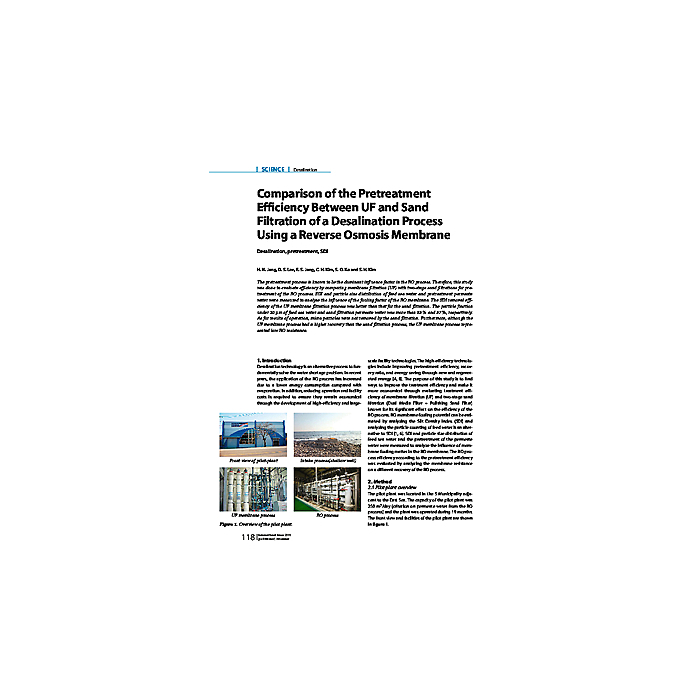Comparison of the Pretreatment Efficiency Between UF and Sand Filtration of a Desalination Process Using a Reverse Osmosis Membrane
4,90 €
Auf Lager
Artikelnummer
05399_2011_SP1_13
The pretreatment process is known to be the dominant influence factor in the RO process. Therefore, this study was done to evaluate efficiency by comparing membrane filtration (UF) with two-stage sand filtrations for pretreatment of the RO process. SDI and particle size distribution of feed sea water and pretreatment permeate water were measured to analyse the influence of the fouling factor of the RO membrane. The SDI removal efficiency of the UF membrane filtration process was better than that for the sand filtration. The particle fraction under 20 µm of feed sea water and sand filtration permeate water was more than 93 % and 97 %, respectively. As for results of operation, micro particles were not removed by the sand filtration. Furthermore, although the UF membrane process had a higher recovery than the sand filtration process, the UF membrane process represented low RO resistance.
| Autoren | H. N. Jang/D. S. Lee, E. S. Jang, C. H. Kim, S. O. Ko and S. H. Kim |
|---|---|
| Erscheinungsdatum | 30.06.2011 |
| Format | |
| Zeitschrift | gwf - Wasser|Abwasser - Special 1 2011 |
| Verlag | DIV Deutscher Industrieverlag GmbH |
| Sprache | English |
| Seitenzahl | 5 |
| Titel | Comparison of the Pretreatment Efficiency Between UF and Sand Filtration of a Desalination Process Using a Reverse Osmosis Membrane |
| Beschreibung | The pretreatment process is known to be the dominant influence factor in the RO process. Therefore, this study was done to evaluate efficiency by comparing membrane filtration (UF) with two-stage sand filtrations for pretreatment of the RO process. SDI and particle size distribution of feed sea water and pretreatment permeate water were measured to analyse the influence of the fouling factor of the RO membrane. The SDI removal efficiency of the UF membrane filtration process was better than that for the sand filtration. The particle fraction under 20 µm of feed sea water and sand filtration permeate water was more than 93 % and 97 %, respectively. As for results of operation, micro particles were not removed by the sand filtration. Furthermore, although the UF membrane process had a higher recovery than the sand filtration process, the UF membrane process represented low RO resistance. |
Eigene Bewertung schreiben


